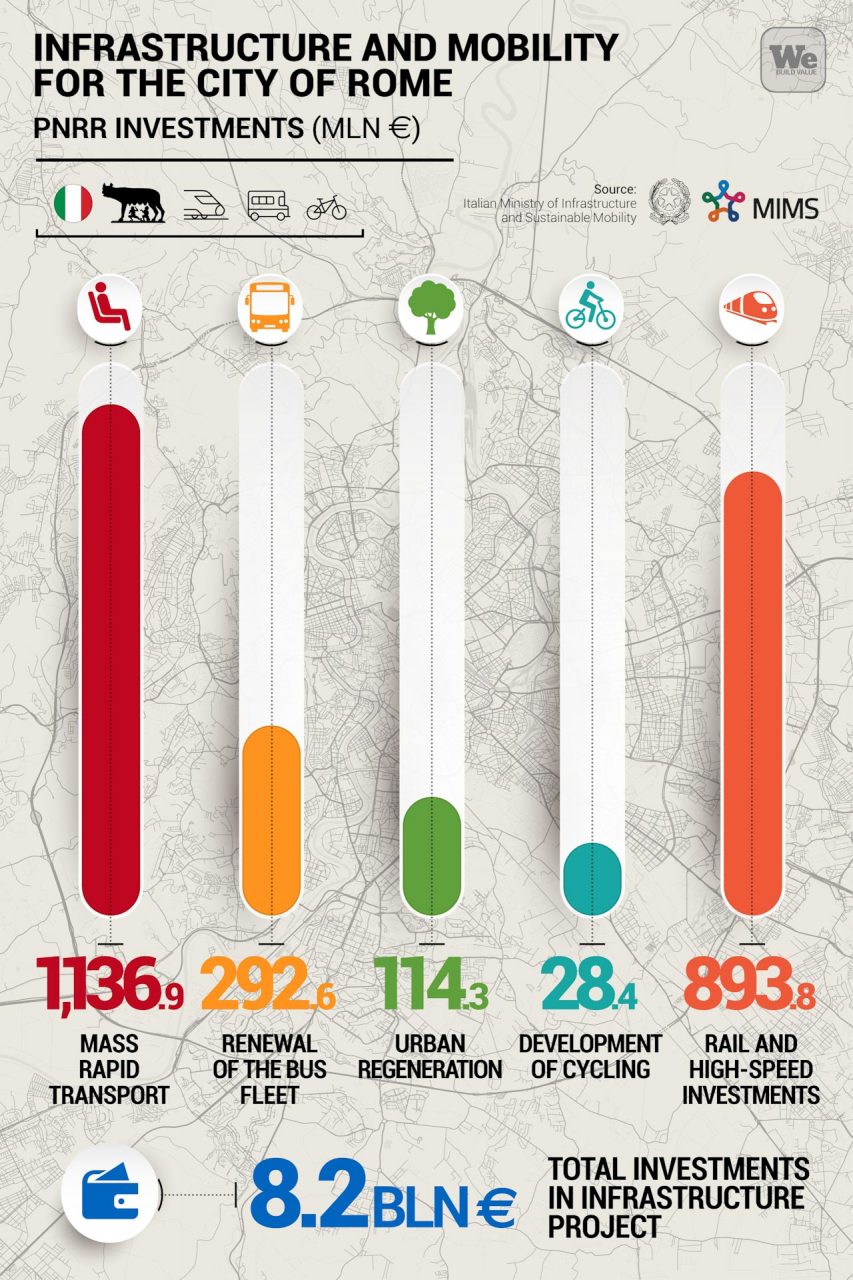It is a city with wonders as ancient as the Colosseum, but its sights are set on the future. Rome, capital of Italy, international symbol of beauty, and magnet for global tourism, is set to be a primary recipient of National Recovery and Resilience Plan (NRRP) funds. The NRRP was developed through the European Union’s Next Generation EU allocations and guidance.
For the Eternal City, access to NRRP funds and the Fondo Nazionale Complementare will mean €8.2 billion in investments, to be channeled primarily into sustainable mobility-related infrastructure projects, but also toward urban renewal and making Rome “smarter”.
Italian Minister of Infrastructure Enrico Giovannini recently announced the details of the plan, indicating that €7.6 billion ($8.4 billion) would be allocated exclusively to mobility, water resources, housing, and urban renewal. Another €600 million ($661 million) will go toward financing the “Caput Mundi” project, spearheaded by the Minister of Tourism, Massimo Garavaglia, and focused on reviving tourism in the Italian capital after the difficult Covid-19 years.
Mayor of Rome Roberto Gualtieri responded enthusiastically to the plan. In commenting on the allocation of funds, Gualtieri explained that the administration’s goal is “to integrate the future of Rome with the strategic assets of the NRRP, through smart development, sustainable mobility, circular economy principles, and territorial inclusion.”
A focus on rail in the Italian capital
Most of the plans provided for in the NRRP involve rail link developments, impacting both the high-speed line, which will be expanded to serve the capital even more extensively, and the metro lines and local railways, which will be further developed.
The government plans to put €3.7 billion ($4.1 billion) toward mobility. Of this amount, around €2 billion will go toward local lines and high-speed rail, and around €1.6 billion toward rapid mass transport (such as metro lines), and upgrades to the city bus fleet. According to Minister Giovannini, one of the “icons” of Rome’s infrastructure revival will be the completion of the city’s metro line C (€1.6 billion will be set aside for this project). Carried out by a consortium of companies that includes the Webuild Group, the line is one of the capital’s key major infrastructures because it begins in the periphery of the city and moves into the historical center. The line’s already-operational section spans 20 kilometers (12.4 miles) and 22 stations, but the work is continuing on through the center and in 2024 will see the opening of two new stations, Amba Aradam and Fori Imperiali.
In addition to completing work on the C line, Mayor Gualtieri also pointed out the need to expand the city’s other two metro lines A and B, and the request to fund the tram line slated to link Roma Termini, one of Europe’s main railway hubs, to the Vatican and the Aurelio district.
The new connection to the Vatican is timed purposely: many of the NRRP initiatives are directly linked to a forthcoming global event, the Jubilee Year of 2025, which Rome will host.
The Jubilee Year: an opportunity for Rome
One of the driving forces behind Rome’s development is the Jubilee Year. As in 2000, the city is already preparing, with the Italian government arranging for a portion of NRRP funds to go toward improving infrastructure to welcome millions of modern pilgrims to the city. To date, Jubilee Year funds total €1.3 billion ($1.4 billion). In part, they will be used to carry out key works that include the rail link between Termini station and the Vatican.
The Italian Ministry of Tourism is also looking at the 2025 Jubilee as an opportunity, allocating a portion of the “Caput Mundi” project’s €500 million ($551 billion) to enhancing Rome’s attractiveness to visitors. This will include significant changes to the city’s suburbs. A total of €354 million ($390 million) will be invested in Rome’s periphery, from improving social housing to upgrading the roads.
“In allocating half a billion euros from the center to the suburbs, we have to keep effective management of tourist traffic as a key goal,” commented Italian Minister of Tourism Garavaglia.
From tourism to infrastructure development, the challenge now is to get the projects moving, using the opportunities afforded by European Union funds to create a fresh start for the capital of Italy. This fresh start will happen through focused development of sustainable mobility, and moving the city into a “smarter” and “greener” future.


